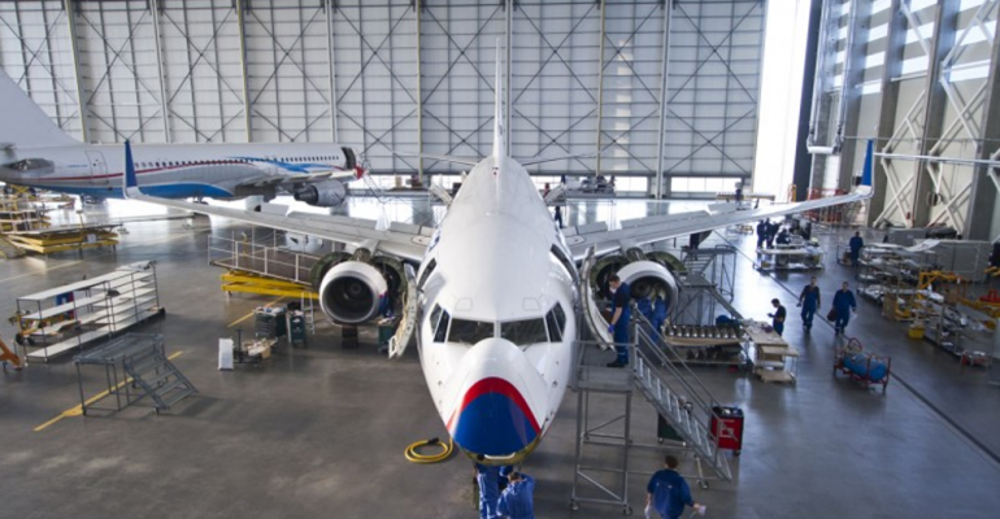旅客便回復の様子:便数は増えていくも、乗客数や収益の伸びは鈍い | The Shape of Recovery: Flights Edging Up, Even As Passengers And Revenues Lag

2020年の「大コロナ危機」は、航空会社にとっての資金難、メーカーやMRO事業者にとっての大不況にその姿を変えつつある。その原因は、多くの航空会社が便数を着々と増やしていく中でも、乗客数・ロードファクター・収益の回復が追い付いていないからだ。
MRO事業者にとっては、需要を左右するのは飛行回数であることから、これから作業量は増えていくはずだ。しかし、果たして航空会社は定められた時期に整備を実施し、その代金を支払うことができるだろうか?
部品やエンジンは地上保管されている他の機材と交換することもできるため、このような方法でMROへの支出を避け、資金の温存を図ることもあるだろう。
RadarBoxによる毎日のフライトデータを見ると、地域ごとに慎重に回復が進んでいる様子が分かる。
7月中旬には、中国の国内線は1月中旬(コロナ危機以前)の16%減に留まっていたが、国際線は同時期の64%減となっていた。中国の航空業界においては、最初にコロナ危機の影響を受けた代わりに、最初に抜け出すというという図式が当てはまるようだ。
また、アメリカ国内線も比較的健全といえる。7月中旬は1月中旬に対して33%減だった。しかし、国際線は50%以上落ち込んでいる上、運航されている便の中には多くの貨物専用機や、旅客機を用いた貨物便が含まれている。
そして、便数の回復は航空会社によって大きくばらつきがあり、サウスウェスト航空のようなLCCが急速に回復する一方、ユナイテッド航空といった大手は後れを取っている。もちろん、大手の回復が遅れているのは国際線への依存度が大きいからだ。
カナダの航空会社はさらに慎重な対応を取っており、国内線でも1月と比較して59%減、国際線は実に79%減だ。
ウィルスによる死亡率が急落しているため、ヨーロッパでも航空旅行の解禁が徐々に進められている。ヨーロッパ域内便はコロナ危機以前の46%減まで回復した。とはいえ、ヨーロパ便の多くは他地域への便が占めており、こちらはまだ低迷している。ヨーロッパとイギリスを結ぶ便は60%減、アジア便は3分の2減、中南米便はほぼ80%減となっている。
南半球に冬が訪れウィルス感染が拡大する中、中南米は財務面・運用面ともに大きな打撃を受けている。たとえば、ブラジル国内線は未だに1月の81%減、国際線はさらに深刻な83%減だ。
インドでは早い段階で旅客便を厳しく制限したが、再開されたのはつい最近になってからだ。国内線はコロナ危機以前の73%減となっており、回復といってもまだ傷だらけの状態だ。そんな中で、貨物機や代用旅客機の整備事業に最善を尽くした。
ナローボディ機の整備は、多くの国際便に用いられるワイドボディ機の整備よりも一般的だ。ライン整備の需要は基本的に日々のフライト数に比例するため、恵まれた状況にある。ただし、延期が可能な整備は、貴重な資金を節約するために延期される傾向が強い。リース機の返却や回収が進むと、リース機の移行作業が頻繁になるが、これらの機体に対するMRO作業は次のオペレーターが確保されるまで保留されるケースもある。
以上は、Henry CanadayがInside MRO誌いた記事です。 Inside MRO誌は、民間航空機MROセクターの最新のトレンドとテクノロジーを調査しています。毎月の各号には、重要なテクノロジー、ビジネス、および運用上の意思決定に必要な情報が記載されています。さらに、加入者は月に1回発行されるAviation Week&Space Technologyを受け取ることができます。Inside MRO誌をもっと知りたい場合、こちらをクリックして下さい。
The great virus crisis of 2020 is resolving itself into a financial disaster for airlines and slack times for OEMs and MROs as most airlines steadily boost flights, but passengers, load factors and revenue lags behind.
For MROs, of course, it is daily flights that usually drive demand, so there should be increasing work to do. But will airlines be able to do it on time or pay for it?
Components and engines can be swapped from still-grounded aircraft to conserve cash and avoid these types of MRO spending.
Daily flight data from RadarBox sketches the geographical shape of the cautious recovery in daily flights.
In mid-July, domestic Chinese flights were down only 16% from mid-January, pre-crisis levels, while international flights remained 64% below mid-January. First-in, first-out of the crisis seems to be working for Chinese aviation.
Also relatively healthy are U.S. domestic flights, down 33% from mid-January by mid-July. But U.S. international flights are now down by more than 50%, and many of these are cargo flights by either dedicated freighters or their temporary substitutes.
And the recovery in flights is very uneven, with LCCs like Southwest Airlines leading the surge and majors like United Airlines lagging behind. It is majors, of course, that most depend on international flying
Canadian carriers are being more cautious, with domestic flights still down 59% and international flights a drastic 79% below January levels.
With virus mortality plunging, Europe is carefully opening up air travel, and intra-European flights are now about 46% below pre-crisis levels. But much European flying is to other regions, and that is still weak. Europe-to-UK flights are down nearly 60%, and flying to Asia is down by two-thirds. Furthermore, European flights to Latin America are down nearly 80%
For as winter hits the southern hemisphere, and virus contagion picks up, Latin America has been hard hit, both financially and in terms of operations. For example, Brazilian domestic flights are still 81% below January levels and international flights are down even more, 83%.
India shut down flying early and tight and has opened it up only recently. But domestic flights are still down 73% from pre-crisis levels. So it’s still a ragged recovery so far. Cargo and substitute cargo maintenance has done best.
Narrowbody work is more common than is support for the widebodies that do many international flights. Line MRO basically tracks daily flights, so is doing better. But any maintenance that can be deferred is being deferred, to conserve that precious cash. Lease transitions will be frequent as aircraft are released or repossessed, but MRO work on these aircraft may wait until the next operator is secured.